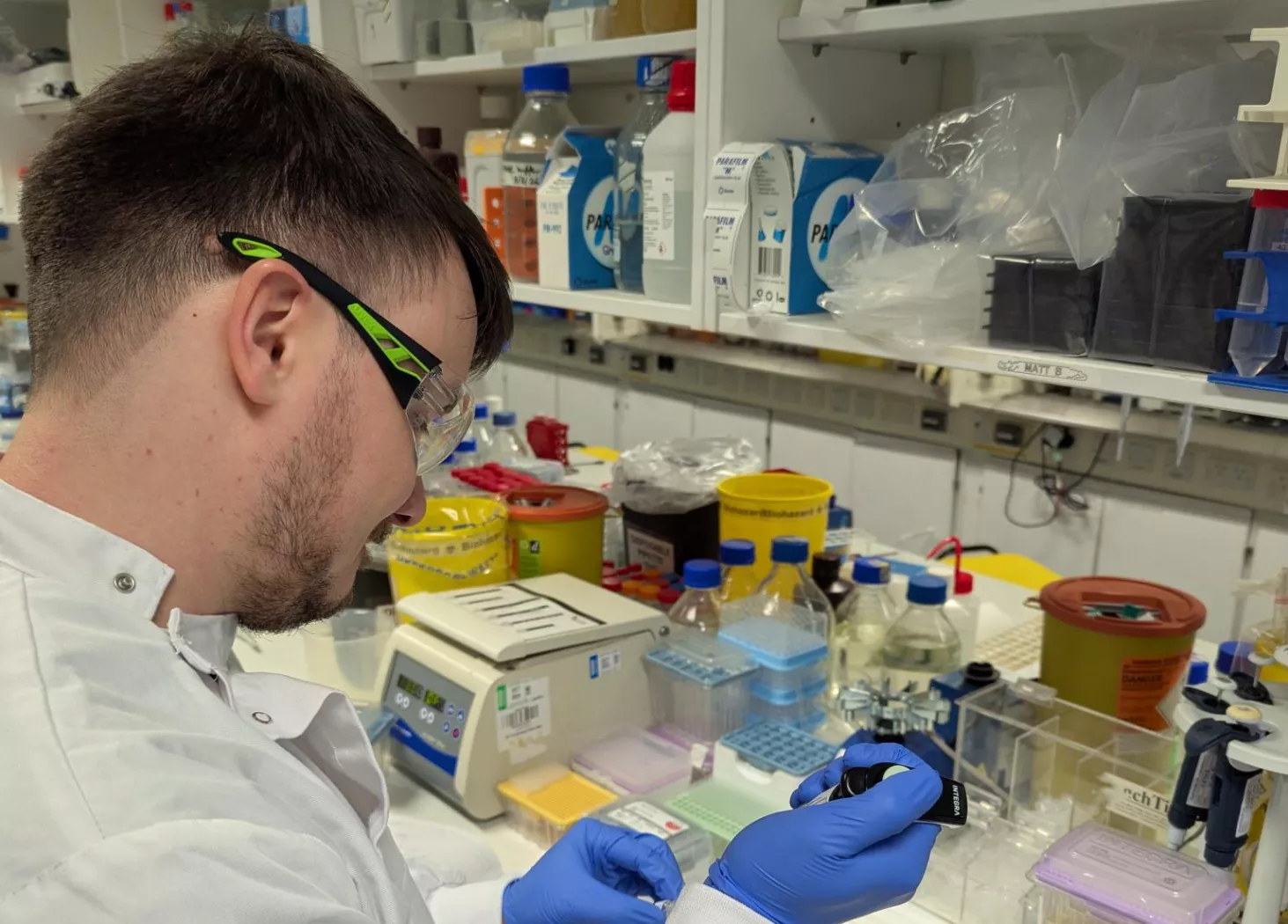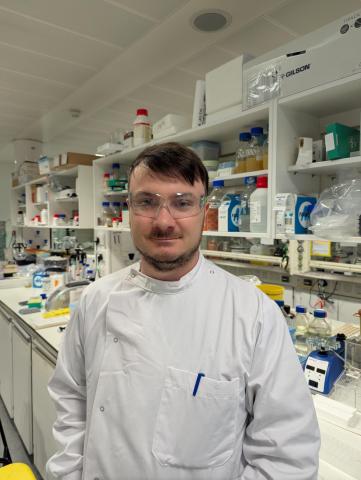Researchers at the IOI are developing new drugs to combat the rise of drug-resistant infections. Postdoctoral research associate Matt Beech is developing a new combination therapy for use with the antibiotic tigecycline.
Tetracyclines are a class of antibiotics that are commonly used to treat a wide range of infections. They are also widely used in agriculture to prevent and treat infections in livestock. Some tetracyclines, like tigecycline, are important last-resort antibiotics in human medicine, used when all other treatments for an infection have failed. However, bacteria have evolved to resist the action of tetracyclines by producing an enzyme called TetX that breaks down the antibiotics, rendering them ineffective.

Matt is developing new inhibitors of TetX to stop it from breaking down the antibiotic. The aim is to develop an inhibitor that can be given to patients alongside tigecycline as a combination therapy.
Inhibiting similar resistance mechanisms that break down β-lactam antibiotics has proved remarkably successful, with several combinations in clinical use across the globe. Despite this, there are currently no TetX inhibitors suitable for use in humans, and those that are in development are largely based on tetracyclines themselves. Matt and coworkers aim to develop an entirely new inhibitor.
Prior research has relied mostly on low-throughput methods, which are small-scale and make finding new TetX inhibitors a slow process. We wanted to develop a method to test large libraries of compounds quickly to maximise our chances of finding an effective inhibitor.

With synthetic chemist Dr. Edmond Toma, Matt designed a tetracycline attached to a fluorescent marker. Using this fluorescent compound, Matt can quickly observe whether a new compound inhibits TetX by measuring how well they compete with the fluorescent tetracycline for binding to the enzyme. Once optimised, the experiment was sent to collaborators at the Experimental Drug Development Centre at the Agency for Science, Technology and Research (A*STAR) in Singapore, where they used their access to robotics and large compound libraries to scale-up testing of molecules and identify new inhibitors of TetX for Matt and coworkers to develop further. These screens can be used to test more than 100,000 molecules against TetX in less than a week. “Seeing the work we’ve done in the lab translated to such a large scale is very exciting.” says Matt.
Matt’s work is an important first step in the drug discovery process, which ultimately aims to develop an inhibitor that will work inside bacterial cells.
The development of TetX inhibitors has until recently been a largely academic curiosity, but we’re seeing an increase in tetracycline resistance globally. By focusing on these resistance mechanisms that have the potential to become big issues, we’re developing drugs for the future.

